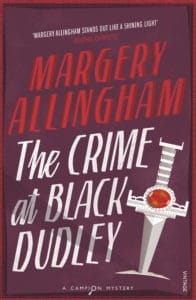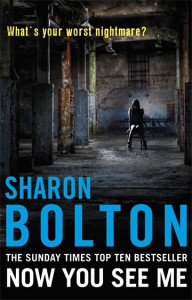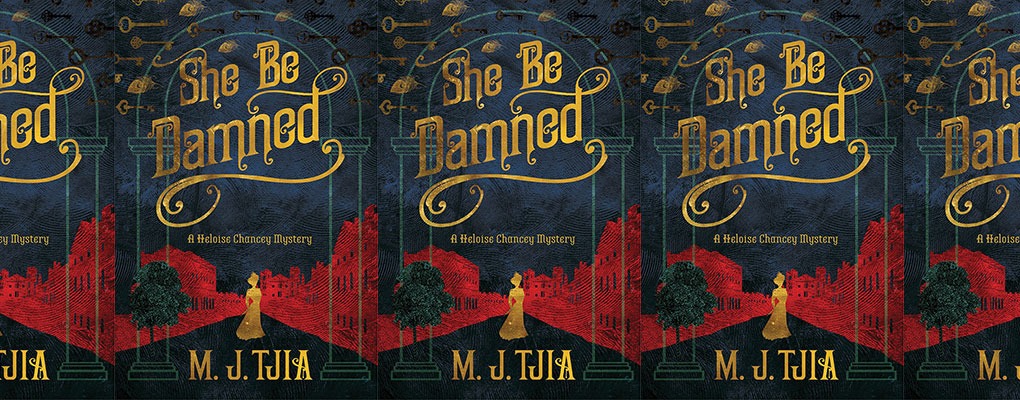Books
MJ Tjia: books that inspired my writing
Recently, my sister asked me what made me want to become a writer. I stared at her, thinking, ‘But everybody wants to be a writer, don’t they?” No, apparently.
Reading has been my favourite pastime from a very young age. In primary school, my greatest pleasures included choosing which Famous Five story to read next, circling which books I wanted from the Book Club form, snuggling up with a packet of chips and an Archie comic. I progressed to books by Baroness Orczy, Hardy, Austen, Crichton and any others that looked interesting in the school library. When I started scribbling my own stories (I still have The Invisible Pianist, which I wrote when I was around nine years old, complete with the cover picture I drew for it—clearly, I was reading too much Nancy Drew at the time) of course I just wanted to emulate those that I admired so much—the authors who’d introduced me to new worlds, adventures, emotions, experiences. Over the years, I have learnt to read and appreciate books, not just as a reader, but as a writer. Below are just a few books and authors that have inspired or influenced my writing.
 Thanks to my mum, I grew up on a steady diet of Agatha Christie, Ngaio Marsh, Margery Allingham and Dorothy L Sayers. My favourite kind of crime fiction is the clue puzzle style, which these women mastered. I am in awe of the genius behind Christie’s smoke and mirrors and Marsh’s finesse at revealing the process of detection. Coupled with brilliant plotting, these writers also introduced me to remarkable, unforgettable characters: suave Roderick Alleyn (I wanted to name my first born ‘Rory’ after him) and his stolid partner, Fox. I adored thoughtful ‘Uncle Albert’ Campion, charming Lord Peter Wimsey, and who can ever forget the inimitable, funny Hercule Poirot? But also, these authors wrote of strong, admirable women too, such as Alleyn’s wife, the aloof, determined Troy, and the tricky spinster, Miss Marple. Most of all, I admired Harriet Vane, who was an Oxford graduate, mystery writer and Wimsey’s later wife.
Thanks to my mum, I grew up on a steady diet of Agatha Christie, Ngaio Marsh, Margery Allingham and Dorothy L Sayers. My favourite kind of crime fiction is the clue puzzle style, which these women mastered. I am in awe of the genius behind Christie’s smoke and mirrors and Marsh’s finesse at revealing the process of detection. Coupled with brilliant plotting, these writers also introduced me to remarkable, unforgettable characters: suave Roderick Alleyn (I wanted to name my first born ‘Rory’ after him) and his stolid partner, Fox. I adored thoughtful ‘Uncle Albert’ Campion, charming Lord Peter Wimsey, and who can ever forget the inimitable, funny Hercule Poirot? But also, these authors wrote of strong, admirable women too, such as Alleyn’s wife, the aloof, determined Troy, and the tricky spinster, Miss Marple. Most of all, I admired Harriet Vane, who was an Oxford graduate, mystery writer and Wimsey’s later wife.
My crime writing style has been heavily influenced by these four authors. I enjoy writing murder mysteries that feature clues and red herrings, suspects and plot twists. More recently, I have enjoyed works by Sharon Bolton. I actually tried to outline the labyrinthian plot of her marvellous Now You See Me on my whiteboard, to see if I could unravel how she’s implemented so many turns and surprises. Other crime writers I admire are Val McDermid, Ian Rankin, Michael Robotham and Peter Robinson, and although my novel is not a police procedural, I employ a similar style of investigation as found in their books. I think the strength of these writers’ works lies not just in the rigour of the mystery and detection, but also in their memorable characters.
 For my novel, She be Damned, I studied the Victorian crime novel, Eleanor’s Victory, by Mary Elizabeth Braddon. Braddon’s novel is set in the 1860s like mine, and depicts a young woman, Eleanor Vane, who detects in order to find out how her father died. I wanted to read of this female character who, by acting as sleuth, defied social and gendered expectations, just as my character, Heloise Chancey, does. Although fictional depictions of female detectives in the 1860s seem far-fetched, there are some indications that women were employed by private detective agencies at the time. Historical novels featuring female sleuths continue to be popular, and I found work by both Kate Griffin and Tasha Alexander inspiring. I also read neo-Victorian work by Emma Donoghue, such as Slammerkin and her short story ‘Cured’, as they are set in the same period and featuring similar themes to my book, to do with sexual exploitation and sex work.
For my novel, She be Damned, I studied the Victorian crime novel, Eleanor’s Victory, by Mary Elizabeth Braddon. Braddon’s novel is set in the 1860s like mine, and depicts a young woman, Eleanor Vane, who detects in order to find out how her father died. I wanted to read of this female character who, by acting as sleuth, defied social and gendered expectations, just as my character, Heloise Chancey, does. Although fictional depictions of female detectives in the 1860s seem far-fetched, there are some indications that women were employed by private detective agencies at the time. Historical novels featuring female sleuths continue to be popular, and I found work by both Kate Griffin and Tasha Alexander inspiring. I also read neo-Victorian work by Emma Donoghue, such as Slammerkin and her short story ‘Cured’, as they are set in the same period and featuring similar themes to my book, to do with sexual exploitation and sex work.
My protagonist, Heloise Chancey, is a courtesan in the Victorian period. Before I even started writing, I studied books like Joanna Richardson’s The Courtesans: The Demi-Monde in 19th Century France, Virginia Rounding’s Grandes Horizontales, Wilson’s The Courtesan’s Revenge and Susan Griffin’s The Book of the Courtesans which each describe the courtesan’s ability to transgress social spheres, pursue intellectual pleasures, amass wealth and gain freedoms only men experienced at the time. Heloise is a woman of independent means, but she is also aware of the restrictions adherent to living in a patriarchal society as a courtesan. For her, intermittent work for a detection agency is as enjoyable and stimulating as when she treads the boards of London’s theatres.
She be Damned is a murder mystery modelled on the many works of crime fiction that I have so admired. With Heloise Chancey and her Chinese maid, Amah Li Leen, I have tried to create characters that readers can embrace and love, and hopefully remember long after they’ve finished the book. I find a real joy in this process, which I will tell my sister.



Please note: Moderation is enabled and may delay your comment being posted. There is no need to resubmit your comment. By posting a comment you are agreeing to the website Terms of Use.